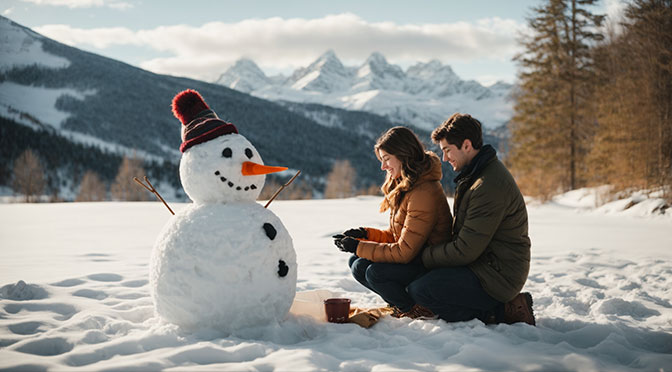As erotic writers, we are always looking for ways to make our readers feel the intensity of every moment in our stories. And what better way to do that than with descriptions of nature? The winter months offer a unique opportunity to explore and describe the raw beauty of nature poetically and sensually. In this blog post, we’ll show you some tips and tricks on writing nature descriptions that will transport your readers into a world of sensory delights.
Set the scene
When sensually describing nature, it’s important that you prepare the scene. Whether it’s a snowy forest, a vast tundra or a moonlit beach, creating a vivid image in your reader’s mind will set the tone for the rest of your description. Play with imagery and sensory words to make them feel the chill in the air, the crunch of snow or the salty sea mist on their skin.
The power of metaphor
Metaphors are a great way to describe the indescribable. When you use them in nature descriptions, it takes your text to a whole new level. Including metaphors in your descriptions can also create a sense of sensuality and metaphysical connection to nature.
All senses
Sensual nature descriptions are more than just visually appealing texts. They appeal to all of your reader’s senses. For example, you could describe the feeling of snowflakes on your skin as “a thousand little kisses”. Or the smell of pine needles crunching under your feet brings back memories of your childhood Christmas trees and the Christmas spirit. If you appeal to all the senses, your reader can immerse themselves in your story and feel a deeper connection to nature:
The snow-covered forest was like an enchanted fairyland. The cold air bit at her skin and she could feel her cheeks reddening from the cold. Every breath was like a breath of clear, fresh ice filling her lungs.
The snow beneath her boots crunched with every step, as if it were telling secret stories. The delicate flakes falling from the sky melted on her tongue, leaving a fresh, clean taste. The cold seeped through her gloves, but she also felt the comforting warmth that surrounded her as she delved deeper into the forest.
The gentle whisper of the wind carried with it the scent of pine needles and wintry stillness. The trees towered majestically into the sky, their branches heavy with the weight of the snow. The sun’s rays breaking through the treetops transformed the snow into sparkling diamonds that glittered like tiny stars on the earth. It was a place where she felt alive, where her senses awoke and the magic of winter enveloped her.
Weave into the story
A great nature description can stand on its own, but when you weave it into your story, it becomes an even more immersive experience. For example, the first snowfall could be described with the metaphor of ‘falling stars’, when a character looks up at the sky and is mesmerized by the flakes swirling around them. Not only is this a beautiful description, but it also enhances the character’s emotional experience and makes the scene even more vivid.
Tying it all together
To create a sensory nature description that really stimulates the senses, it’s important to tie everything together. When you combine vivid imagery, metaphors and sensory words with a compelling story, you can transport your readers into a world of sensory delights. Descriptions of nature can take your story to a whole new level and stimulate your reader’s imagination and emotions.
Describing nature in a sensory way is a great way to create a captivating reading experience. With vivid imagery, metaphors and sensual words, you can transport your reader into a world of sensory delights. By playing with all the senses, incorporating them into the story and tying everything together, you can create an unforgettable experience for your readers. So explore the beauty of winter nature and get ready to create incredibly sensual moments in your texts.

